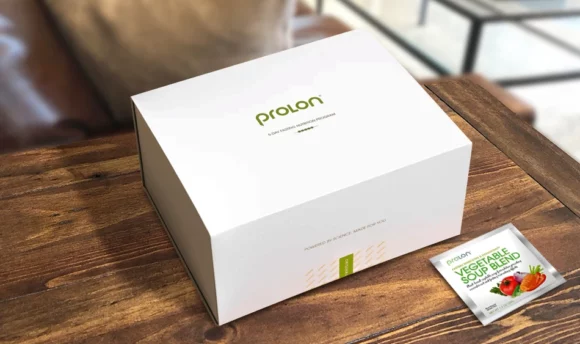Intermittent Fasting: Does It Cause Muscle Gain or Loss?
Read on to find out whether intermittent fasting can help or hinder your muscle gain goals.

Intermittent fasting is considered one of the most popular diets of our age.
Generally, there are many types of intermittent fasting. However, all of them have something in common: the fact that they last longer than a typical overnight fast.
Studies show that intermittent fasting can indeed help you lose weight. However, others seem to stress that this diet causes muscle loss.
In this article, we present everything you need to know about intermittent fasting and whether it affects your muscles.
So, let’s stop wasting time and get into it!
Is It Possible to Gain Muscle While Intermittent Fasting?
Yes, it is possible. However, most studies of intermittent fasting are conducted for weight loss purposes. At this point, it’s crucial to understand that it is possible to lose both lean (muscle mass) and fat mass at the same time. So, in a way, every diet can lead to muscle loss, not only intermittent fasting.
For this reason, several studies have shown that amounts of lean mass (about 2 pounds) can be lost after months of fasting diets, including intermittent fasting.
In general, it appears that intermittent fasting will not make you lose more muscle than other diets.
Can Intermittent Fasting Cause Muscle Loss?
Intermittent fasting can lead to loss of lean muscle mass.
This could be a concern for those looking to both lose weight and grow muscle. So, the next question that comes to mind is whether it’s possible to gain muscle while practicing intermittent fasting.
How to Gain Muscle While Fasting?
To gain muscle, you’d have to burn fewer calories than you eat and consume enough protein to build new muscle tissues. Additionally, you’d have to exercise to support muscle growth. If you don’t, even if you consume proteins and eat more calories than you burn, you won’t see an increase in your muscle mass.
Studies show that consuming enough protein on a regular basis or even throughout the day itself is essential for muscle growth. However, that doesn’t mean that intermittent fasting muscle gain is impossible. While intermittent fasting may not be the best diet for gaining muscle mass quick, here are some points you should follow if you want to maintain or even gain muscle while fasting:
Exercise while fasting
Our body has 3 main nutrient sensors, and it alternates from a catabolic (breaking food and nutrients down, including amino acids) to an anabolic (building energy up) state. When fasting, the human body breaks down stored energy, such as carbohydrates, cellular parts (protein), and body fat.
When you eat before working out, you activate the nutritional sensor insulin. This is the hormone responsible for energy storage. Unfortunately, because it inhibits the necessary enzyme, it limits the breakdown of body fat.
Furthermore, our bodies use every ounce of energy provided by meals, implying that burning stored body fat is far more beneficial while attempting to grow muscle.
So, there are two main reasons to eat before you exercise:
-
- To build body fat and lean mass.
-
- You are an athlete and want additional energy when you work out to maximize weight loss and lose fat.
What’s more, exercise can promote autophagy, too. Hence, you can maximize health benefits (and the burning of amino acids) when exercising during fasting. From improved insulin sensitivity to cancer prevention, the health benefits of exercise are endless.
Now, if you have insulin sensitivity, you’d need to follow a specific diet, except for exercising. In general, people with insulin sensitivity consume non-starchy veggies, like broccoli, tomatoes, and lots of citrus fruits, such as oranges, grapefruits, and lemons.
Develop your growth hormone
Fasting is one of the best ways to increase HGH (human growth hormone). HGM helps muscle, bone, and cartilage growth. By increasing it, you have better chances of getting stronger and bigger muscles and being protected from muscle loss.
Until your fasting is over, you keep sending your body in a constant anabolic state for targeted muscle gain. And even if you consume the right foods, like fatty fish, your body will get all the energy and nutrients it needs for better muscle building.
As we age, the release of the human growth hormone decreases, so intermittent fasting becomes even more essential for muscle growth and weight loss.
Don’t limit calories
Remember that fasting isn’t about how much food you consume but when you consume it. Sometimes fasting could be eating specific food after you exercise, while other times, it could be not eating at all during the fasting period. The reason for this is that even small and light meals increase insulin levels, which you want to avoid.
As a result, a traditional diet can prevent fat loss via exercise, while fasting doesn’t require calorie reduction, as most people think. Fasting is about timing your calorie intake to increase fat loss while, at the same time, boosting muscle gain.
So, if you want to gain muscle while fasting, don’t hold back when eating. Instead, concentrate on consuming the right amount of food to cover your calorie needs during fasting.
Just look for the best foods to break a fast and be careful how much food you consume, as it can also lead to weight gain.
Focus on burning critical fat
Fasting and exercise force your body to burn stored fat and use it for energy. Also, when you exercise, fatty acids are released and converted into ketones, which give you energy. So, fasting burns fat reserves quicker than normal.
The great thing is that fasting doesn’t just burn fat deposits. Studies have shown that it also helps you burn dangerous visceral fat effectively. Visceral fat gathers around vital organs, like the liver and intestines, and contributes to type 2 diabetes and fatty liver or heart disease.
Boost your metabolism
Popular belief supports that fasting slows down metabolism, including protein metabolism. However, that’s not correct since research has shown it actually improves it.
In fact, after fasting, you release growth hormones, which allowed our ancestors to forage for food despite their stomachs being empty. Thanks to their good protein metabolism, they managed to help our species survive.
Fasting, therefore, can help burn your body fat more efficiently, giving you more space to build muscle.
Find the best time to exercise
If you don’t exercise, you may not reach your weight loss goals. Failing to exercise and remaining active during intermittent fasting can plateau your success.
Remember: Intermittent fasting is not just a diet but an actual lifestyle, so treat it as such. Apart from eating healthy food, you should also remain hydrated, get good sleep, and exercise regularly. Only if you follow these tips will you see success with intermittent fasting.
Try Different Types of Intermittent Fasting
Even though intermittent fasting is popular, not everyone is sure how it works and what types of fasting there are.
This is most likely because intermittent fasting is a general term encompassing several types of eating habits. Here are the ones you should know:
Periodic fasting
Commonly known as whole-day fasting, periodic fasting is about occasional fasts separated by days or even weeks of normal eating. The program seems to involve fasting for one or more days every 2 to 4 weeks. That said, take this information with a grain of salt, as exact definitions usually vary.
Religious fasting
There’s not much to say about religious fasting. Nearly every religion, including Christianity and Islam, have fasts associated with religious events. Most popular examples are the fasts of Lent for Christians and Ramadan for Muslims.
Religious fasting is considered a great method for weight loss.
Time-restricted eating
Time-restricted eating or feeding is all about restoring calories to a certain number of hours a day. For example, if you’re on a time-restricted eating schedule, you may not be allowed to eat for 8 or 12 continuous hours.
Some of the most common schedules are:
-
- The 14/10 method: If you follow this schedule, you would have to fast for 14 hours and eat for the remaining 10 hours. A common example is having an eating window between 9 AM and 7 PM.
-
- The 16/8 method: Eating is allowed only for 8 hours, and the remaining 16 hours are for fasting, e.g., a common eating window is from 10 AM to 6 PM.
Alternate-day fasting
As its name implies, alternate-day fasting involves alternating between non-fasting and fasting days. If you follow this type of fasting, it means you have to fast every other day.
The 5:2 diet
The 5:2 diet is quite popular and similar to periodic fasting. It’s about eating normally for 5 days a week and eating 25% of your typical amount of calories 2 days per week. In a way, the 5:2 is a form of modified fasting, especially if you eat one time per day.
What Training to Choose While Fasting?
There are many types of training to choose from while fasting and making your muscle tissue stronger. Here are the most popular:
Sprint training
Generally, a sprint workout doesn’t exceed 20 minutes. This includes the work and recovery periods.
Sprint training is great because it produces exceptional results with a minimum time commitment. So, if you want to exercise well but quickly during fasting, sprint training is for you.
Cardio training
Some of the most common types of cardio exercise include running, swimming, cross-country skiing, and brisk walking. If you prefer the gym, try the treadmill, stationary cycle, or rowing machine.
That said, keep in mind that cardio training doesn’t involve exercises that aim to build strength, such as weight machines. Instead, cardio is about building cardiovascular endurance. A nearly perfect cardio workout lasts from 20 to 60 minutes, apart from when you need to warm up and cool down.
Conclusion
Intermittent fasting is a popular form of diet that uses longer fasting periods than your typical overnight fast. There are many types, and each incorporates different fasting and eating windows.
As shown above, intermittent fasting doesn’t seem to make you lose muscle mass more than other diets. Yet, exercising more while fasting seems to help preserve your muscle growth.
So, don’t forget to work out and consume enough protein to maintain your muscle mass during intermittent fasting – and even possibly increase it!

















































 Select your language:
Select your language: 








